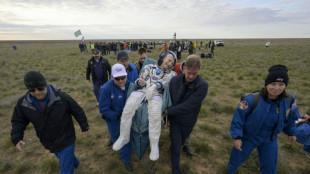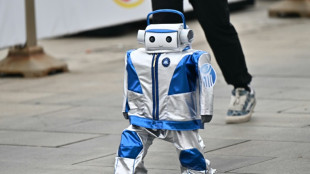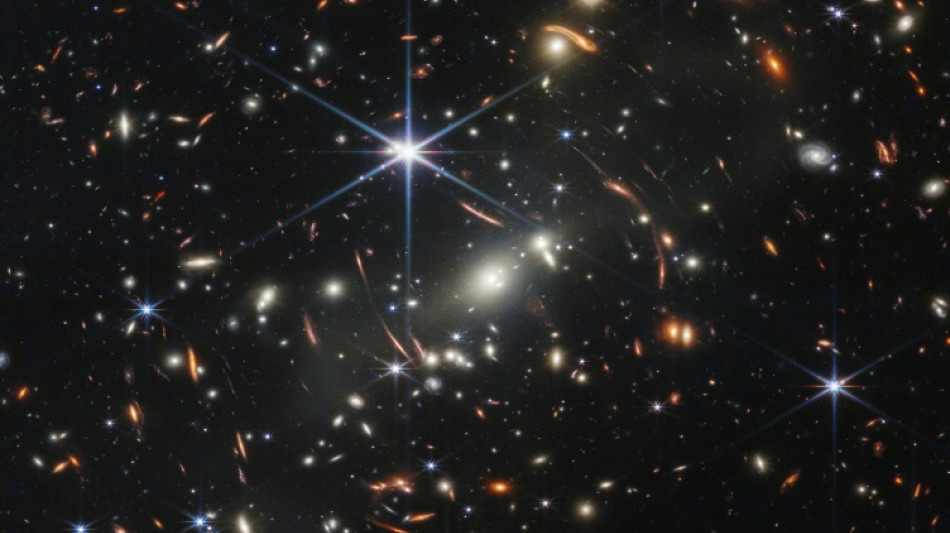
-
 Thunder crush Grizzlies as Celtics, Cavs and Warriors win
Thunder crush Grizzlies as Celtics, Cavs and Warriors win
-
Vance heads to India for tough talks on trade

-
 China slams 'appeasement' of US as nations rush to secure trade deals
China slams 'appeasement' of US as nations rush to secure trade deals
-
'Grandpa robbers' go on trial for Kardashian heist in Paris

-
 Swede Lindblad gets first win in just third LPGA start
Swede Lindblad gets first win in just third LPGA start
-
Gold hits record, dollar drops as tariff fears dampen sentiment
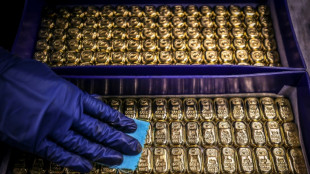
-
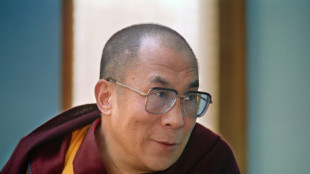 As Dalai Lama approaches 90, Tibetans weigh future
As Dalai Lama approaches 90, Tibetans weigh future
-
US defense chief shared sensitive information in second Signal chat: US media
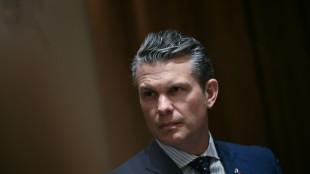
-
 Swede Lingblad gets first win in just third LPGA start
Swede Lingblad gets first win in just third LPGA start
-
South Korea ex-president back in court for criminal trial

-
 Thunder crush Grizzlies, Celtics and Cavs open NBA playoffs with wins
Thunder crush Grizzlies, Celtics and Cavs open NBA playoffs with wins
-
Beijing slams 'appeasement' of US in trade deals that hurt China

-
 Trump in his own words: 100 days of quotes
Trump in his own words: 100 days of quotes
-
Padres say slugger Arraez 'stable' after scary collision

-
 Trump tariffs stunt US toy imports as sellers play for time
Trump tariffs stunt US toy imports as sellers play for time
-
El Salvador offers to swap US deportees with Venezuela
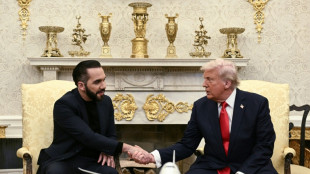
-
 Higgo holds on for win after Dahmen's late collapse
Higgo holds on for win after Dahmen's late collapse
-
El Salvador's president proposes prisoner exchange with Venezuela
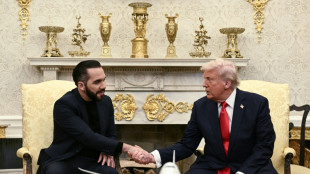
-
 Gilgeous-Alexander, Jokic, Antetokounmpo named NBA MVP finalists
Gilgeous-Alexander, Jokic, Antetokounmpo named NBA MVP finalists
-
Thomas ends long wait with playoff win over Novak

-
 Thunder rumble to record win over Grizzlies, Celtics top Magic in NBA playoff openers
Thunder rumble to record win over Grizzlies, Celtics top Magic in NBA playoff openers
-
Linesman hit by projectile as Saint-Etienne edge toward safety

-
 Mallia guides Toulouse to Top 14 win over Stade Francais
Mallia guides Toulouse to Top 14 win over Stade Francais
-
Israel cancels visas for French lawmakers
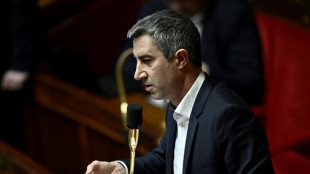
-
 Russia and Ukraine trade blame over Easter truce, as Trump predicts 'deal'
Russia and Ukraine trade blame over Easter truce, as Trump predicts 'deal'
-
Valverde stunner saves Real Madrid title hopes against Bilbao

-
 Ligue 1 derby interrupted after assistant referee hit by projectile
Ligue 1 derby interrupted after assistant referee hit by projectile
-
Leclerc bags Ferrari first podium of the year

-
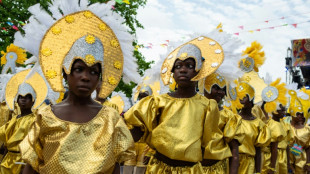 Afro-Brazilian carnival celebrates cultural kinship in Lagos
Afro-Brazilian carnival celebrates cultural kinship in Lagos
-
Ligue 1 derby halted after assistant referee hit by projectile

-
 Thunder rumble with record win over Memphis in playoff opener
Thunder rumble with record win over Memphis in playoff opener
-
Leverkusen held at Pauli to put Bayern on cusp of title

-
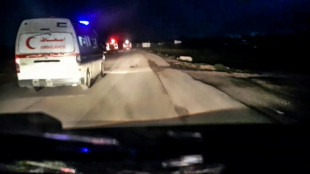 Israel says Gaza medics' killing a 'mistake,' to dismiss commander
Israel says Gaza medics' killing a 'mistake,' to dismiss commander
-
Piastri power rules in Saudi as Max pays the penalty

-
 Leaders Inter level with Napoli after falling to late Orsolini stunner at Bologna
Leaders Inter level with Napoli after falling to late Orsolini stunner at Bologna
-
David rediscovers teeth as Chevalier loses some in nervy Lille win

-
 Piastri wins Saudi Arabian Grand Prix, Verstappen second
Piastri wins Saudi Arabian Grand Prix, Verstappen second
-
Kohli, Rohit star as Bengaluru and Mumbai win in IPL

-
 Guirassy helps Dortmund past Gladbach, putting top-four in sight
Guirassy helps Dortmund past Gladbach, putting top-four in sight
-
Alexander-Arnold lauds 'special' Liverpool moments

-
 Pina strikes twice as Barca rout Chelsea in Champions League semi
Pina strikes twice as Barca rout Chelsea in Champions League semi
-
Rohit, Suryakumar on song as Mumbai hammer Chennai in IPL

-
 Dortmund beat Gladbach to keep top-four hopes alive
Dortmund beat Gladbach to keep top-four hopes alive
-
Leicester relegated from the Premier League as Liverpool close in on title

-
 Alexander-Arnold fires Liverpool to brink of title, Leicester relegated
Alexander-Arnold fires Liverpool to brink of title, Leicester relegated
-
Maresca leaves celebrations to players after Chelsea sink Fulham

-
 Trump eyes gutting US diplomacy in Africa, cutting soft power: draft plan
Trump eyes gutting US diplomacy in Africa, cutting soft power: draft plan
-
Turkey bans elective C-sections at private medical centres

-
 Lebanon army says 3 troops killed in munitions blast in south
Lebanon army says 3 troops killed in munitions blast in south
-
N.America moviegoers embrace 'Sinners' on Easter weekend
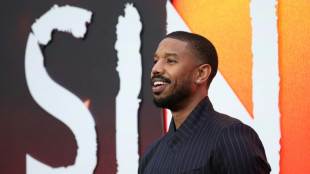

Webb Telescope: What will scientists learn?
The James Webb Space Telescope's first images aren't just breathtaking -- they contain a wealth of scientific insights and clues that researchers are eager to pursue.
Here are some of the things scientists now hope to learn.
- Into the deep -
Webb's first image, released Monday, delivered the deepest and sharpest infrared image of the distant universe so far, "Webb's First Deep Field."
The white circles and ellipses are from the galaxy cluster in the foreground called SMACS 0723, as it appeared more than 4.6 billion years ago -- roughly when our Sun formed too.
The reddish arcs are from light from ancient galaxies that has traveled more than 13 billion years, bending around the foreground cluster, which acts as a gravitational lens.
NASA astrophysicist Amber Straughn said she was struck by "the astounding detail that you can see in some of these galaxies."
"They just pop out! There is so much more detail, it's like seeing in high-def."
Plus, added NASA astrophysicist Jane Rigby, the image can teach us more about mysterious dark matter, which is thought to comprise 85 percent of matter in the universe -- and is the main cause of the cosmic magnifying effect.
The composite image, which required a 12.5 hour exposure time, is considered a practice run. Given longer exposure time, Webb should break all-time distance records by gazing back to the first few hundred million years after the Big Bang, 13.8 billion years ago.
- The hunt for habitable planets -
Webb captured the signature of water, along with previously undetected evidence of clouds and haze, in the atmosphere surrounding a hot, puffy gas giant planet called WASP-96 b that orbits a distant star like our Sun.
The telescope achieved this by analyzing starlight filtered through the planet's atmosphere as it moves across the star, to the unfiltered starlight detected when the planet is beside the star -- a technique called spectroscopy that no other instrument can do at the same detail.
WASP-96 b is one of more than 5,000 confirmed exoplanets in the Milky Way. But what really excites astronomers is the prospect of pointing Webb at smaller, rocky worlds, like our own Earth, to search for atmospheres and bodies of liquid water that could support life.
- Death of a star -
Webb's cameras captured a stellar graveyard, in the Southern Ring Nebula, revealing the dim, dying star at its center in clear detail for the first time, and showing that it is cloaked in dust.
Astronomers will use Webb to delve deeper into specifics about "planetary nebulae" like these, which spew out clouds of gas and dust.
These nebulae will eventually also lead to rebirth.
The gas and cloud ejection stops after some tens of thousands of years, and once the material is scattered in space, new stars can form.
- A cosmic dance -
Stephan's Quintet, a grouping of five galaxies, is located in the constellation Pegasus.
Webb was able to pierce through the clouds of dust and gas at the center of the galaxy to glean new insights, such as the velocity and composition of outflows of gas near its supermassive black hole.
Four of the galaxies are close together and locked in a "cosmic dance" of repeated close encounters.
By studying it, "you learn how the galaxies collide and merge," said cosmologist John Mather, adding our own Milky Way was probably assembled out of 1,000 smaller galaxies.
Understanding the black hole better will also give us greater insights into Sagittarius A*, the black hole at the center of the Milky Way, which is shrouded in dust.
- Stellar nursey -
Perhaps the most beautiful image is that of the "Cosmic Cliffs" from the Carina Nebula, a stellar nursery.
Here, for the first time, Webb has revealed previously invisible regions of star formation, which will tell us more about why stars form with certain mass, and what determines the number that form in a certain region.
They may look like mountains, but the tallest of the craggy peaks are seven light years high, and the yellow structures are made from huge hydrocarbon molecules, said Webb project scientist Klaus Pontoppidan.
In addition to being the stuff of stars, nebular material could also be where we come from.
"This may be the way that the universe is transporting carbon, the carbon that we're made of, to planets that may be habitable for life," he said.
- The great unknown -
Perhaps most exciting of all is journeying into the unknown, said Straughn.
Hubble played a key role in discovering that dark energy is causing the universe to expand at an ever-growing rate, "so it's hard to imagine what we might learn with this 100 times more powerful instrument."
P.Anderson--BTB


